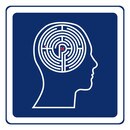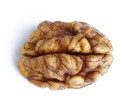The thought processes are actually electrical impulses: an impulse at one end of a neuron triggers the production of neurotransmitters, which are released at the other end into a space shared by other neurons. Neurons communicate not only with thousands of other neurons, but also with other tissues such as muscles, skin and digestive organs. Part of the high metabolic needs of the brain is from the energy needed to keep the electrical impulses firing.
Different brain functions are localized into specific sections of the brain. The largest part (“cerebrum”) controls language, speech, emotions, voluntary movement, and is the place where memories are stored and processed as well as where calculations are done. In addition, it comprehends sounds and images, and generates music and art. The “brain stem” connects the cerebrum with the spinal cord. It regulates critical body functions like breathing, swallowing, blood pressure, heartbeat and pulse rate, digestion and posture. Movement and coordination start in the “cerebellum,” which also stores memories of practiced movements. Memory formation occurs in the “hippocampus.” This part of the brain continues to produce nerve cells even during adulthood.
 As the most metabolically active part of the body, the brain demands nutrients to support its essential work. Filling the brain’s nutritional needs is an important part of using the mind to its fullest potential. The human brain begins to form very early in prenatal life, but in many ways, brain development is a lifelong project. Thus, an adequate micronutrient intake can support cognition and mental performance from gestation through to old age.
As the most metabolically active part of the body, the brain demands nutrients to support its essential work. Filling the brain’s nutritional needs is an important part of using the mind to its fullest potential. The human brain begins to form very early in prenatal life, but in many ways, brain development is a lifelong project. Thus, an adequate micronutrient intake can support cognition and mental performance from gestation through to old age. The brain
The brain Pregnancy
Pregnancy Infants
Infants School children and students
School children and students Adults
Adults Seniors
Seniors